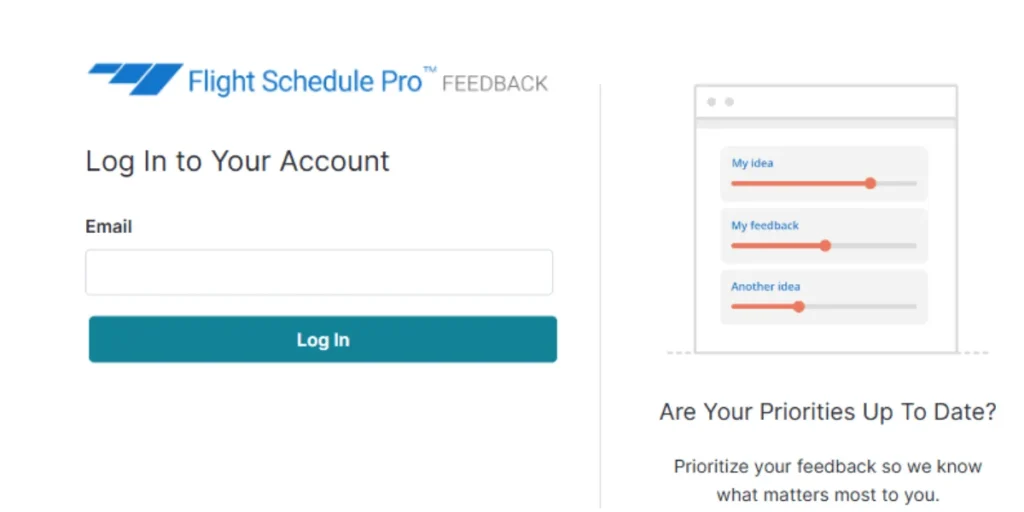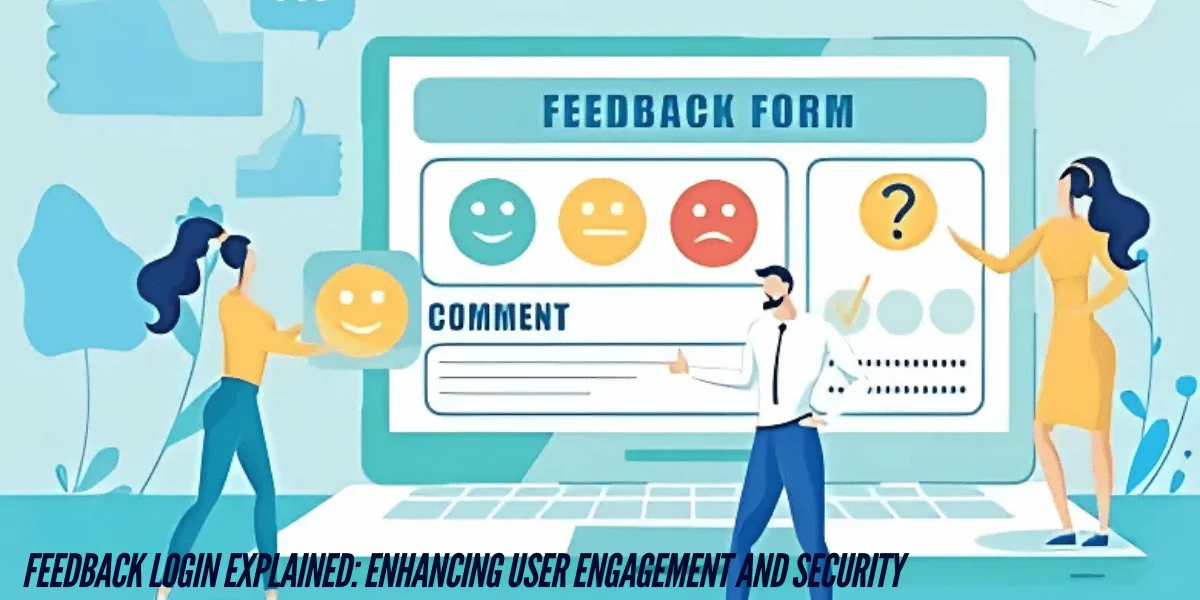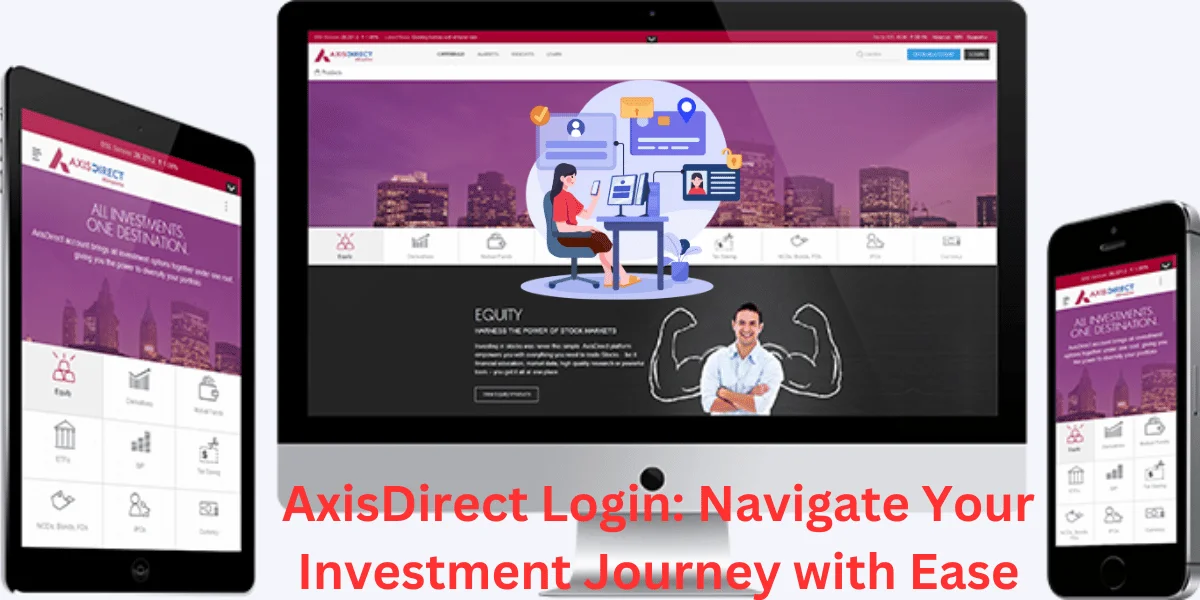Feedback Login Explained: Enhancing User Engagement and Security
In today’s digital landscape, user engagement is more critical than ever. Businesses and organizations continually seek innovative ways to connect with their users, gather insights, and enhance security. One effective method that has gained traction is the feedback login system. This article explores what feedback login is, how it works, its benefits, and strategies for implementing it effectively to enhance user engagement and security.
Understanding Feedback Login
What is Feedback Login?
Feedback login refers to a system that allows users to log into a platform and provide feedback on their experience. This feedback can take various forms, including ratings, comments, suggestions, and surveys. The concept integrates user authentication with feedback mechanisms, ensuring that the insights gathered are from verified users. By linking feedback directly to user accounts, organizations can better understand user behavior, preferences, and pain points.
How Feedback Login Works

Feedback login systems typically involve a two-step process:
- User Authentication: Users are required to log in to their accounts using a secure method, such as a password, biometric verification, or two-factor authentication. This step ensures that the feedback comes from genuine users and helps maintain the integrity of the feedback collected.
- Feedback Submission: Once logged in, users can access various feedback tools, such as surveys, rating systems, or comment boxes. Organizations can tailor these tools to gather specific insights related to their products, services, or overall user experience.
Importance of Feedback Login
The integration of feedback mechanisms within the login process serves several essential purposes:
- Enhanced Security: By requiring users to log in before providing feedback, organizations can reduce the risk of spam and malicious input. This layer of security helps ensure that feedback is authentic and reliable.
- Improved Data Quality: With verified users providing feedback, organizations can obtain higher-quality data that reflects the true experiences and opinions of their customer base. This information is invaluable for making informed decisions.
- User Engagement: Feedback login encourages users to interact more deeply with the platform. By giving users a voice, organizations foster a sense of community and investment in the service or product, leading to higher retention rates.
Benefits of Feedback Login
Implementing a feedback login system offers numerous advantages for both organizations and users:
1. Increased User Engagement
When users are given the opportunity to provide feedback directly after logging in, they are more likely to feel valued and heard. This increased engagement can lead to:
- Higher Response Rates: Engaged users are more likely to complete surveys or provide feedback, resulting in a wealth of information that organizations can use for improvement.
- User Loyalty: When users feel their opinions matter, they are more likely to return to the platform, enhancing customer loyalty.
2. Personalized User Experience
Feedback login systems can collect data that enables organizations to offer personalized experiences. For instance:
- Tailored Recommendations: By analyzing feedback and user behavior, organizations can recommend products or content that align with users’ preferences.
- Custom Communication: Organizations can use feedback data to craft personalized messages and offers, improving overall customer satisfaction.
3. Actionable Insights
Collecting feedback through a login system allows organizations to gather specific insights that can drive decision-making. For example:
- Identifying Pain Points: User feedback can highlight areas of the platform that need improvement, allowing organizations to address issues proactively.
- Trend Analysis: Organizations can track feedback trends over time, helping them identify emerging issues or opportunities for growth.
4. Enhanced Security
Incorporating feedback login improves the overall security of the feedback process:
- Reduced Spam: By ensuring that only authenticated users can provide feedback, organizations can significantly reduce the amount of spam or irrelevant input they receive.
- Accountability: When users log in to provide feedback, they are more likely to provide honest and constructive criticism, knowing that their feedback is traceable.
Implementing an Effective Feedback Login System
To successfully implement a feedback login system, organizations should consider several key strategies:
1. User-Friendly Interface
A user-friendly interface is crucial for encouraging feedback. This includes:
- Simple Login Process: Ensure that the login process is straightforward and quick. Consider options like social media logins to streamline the experience.
- Intuitive Feedback Forms: Design feedback forms that are easy to navigate, with clear instructions and concise questions.
2. Clearly Communicate the Purpose
Users are more likely to engage with a feedback login system when they understand its purpose. Organizations should:
- Explain the Benefits: Communicate how user feedback contributes to improving the platform and enhancing the user experience.
- Showcase Changes Made: Regularly inform users about changes made as a result of their feedback, demonstrating that their opinions matter.
3. Offer Incentives
To boost participation in the feedback process, consider offering incentives:
- Rewards Programs: Implement a system where users can earn points or discounts for providing feedback.
- Exclusive Access: Offer users exclusive access to new features or products in exchange for their insights.
4. Ensure Data Privacy
With the increasing importance of data privacy, organizations must prioritize user security:
- Transparent Policies: Clearly outline how user data will be used and protected in the feedback process.
- Secure Data Storage: Implement robust security measures to protect user data, ensuring compliance with relevant regulations (e.g., GDPR).
5. Regularly Analyze Feedback
Feedback is only valuable if it is analyzed and acted upon:
- Data Analysis Tools: Utilize data analysis tools to interpret feedback and identify trends.
- Action Plans: Develop action plans based on feedback insights, setting clear goals for improvement.
Also read: axisdirect login | kalupur bank login | Advantage TVS in Login | BTSmart.Exchange Login
Challenges of Feedback Login Systems
While feedback login systems offer numerous benefits, organizations may face challenges in implementation:
1. User Resistance
Some users may be hesitant to log in or provide feedback due to privacy concerns or perceived complexity. Organizations must address these concerns through clear communication and transparency.
2. Technical Issues
Technical difficulties, such as login failures or bugs in feedback forms, can deter users from participating. Organizations should prioritize regular testing and maintenance to ensure a smooth user experience.
3. Balancing Security and Accessibility
While security is essential, organizations must also consider accessibility. Overly complicated login processes can discourage user engagement. Striking the right balance is crucial for success.
Future Trends in Feedback Login Systems
As technology continues to evolve, so too will feedback login systems. Here are some potential trends to watch:
1. Integration with AI
Artificial intelligence (AI) can enhance feedback login systems by:
- Personalizing User Experience: AI algorithms can analyze user behavior and feedback to create tailored experiences.
- Automating Feedback Analysis: AI can streamline the analysis of feedback data, quickly identifying trends and areas for improvement.
2. Mobile Optimization
With the rise of mobile device usage, organizations must ensure that their feedback login systems are optimized for mobile users. This includes:
- Responsive Design: Feedback forms should be mobile-friendly, allowing users to easily provide input from their smartphones.
- App Integration: Integrating feedback mechanisms into mobile applications can enhance engagement with users on the go.
3. Increased Focus on User Privacy
As data privacy concerns continue to grow, organizations will need to prioritize user privacy in their feedback login systems. This may involve:
- Enhanced Security Features: Implementing advanced security measures, such as biometric authentication, to protect user data.
- Transparency in Data Usage: Clearly communicating how user data will be used and ensuring compliance with privacy regulations.
Conclusion
In an increasingly competitive digital landscape, engaging users and enhancing security are paramount. A feedback login system provides a robust solution for achieving these goals. By integrating user authentication with feedback mechanisms, organizations can gather valuable insights, foster user loyalty, and improve their overall platforms.
Implementing a feedback login system requires careful consideration of user experience, data privacy, and analysis strategies. By overcoming challenges and adapting to future trends, organizations can create a successful feedback loop that enhances user engagement and drives continuous improvement. As businesses continue to evolve, embracing feedback login systems will be a critical step toward achieving lasting success in user engagement and security.
FAQs about Feedback Login
1. How does a feedback login enhance user engagement?
By allowing users to provide feedback after logging in, organizations foster a sense of value and community. Engaged users are more likely to share their opinions and return to the platform, ultimately enhancing customer loyalty.
2. What are the benefits of implementing a feedback login system?
Some key benefits include increased user engagement, improved data quality, personalized user experiences, actionable insights, and enhanced security. These advantages contribute to better decision-making and user satisfaction.
3. What future trends can we expect in feedback login systems?
Future trends may include the integration of artificial intelligence (AI) for personalized experiences and automated analysis, increased mobile optimization for user convenience, and a stronger focus on user privacy and data security.
4. Can feedback login systems be integrated into mobile applications?
Yes, feedback login systems can and should be optimized for mobile applications. This includes ensuring that feedback forms are mobile-friendly and that the login process is quick and seamless for users on their smartphones.
5. What should organizations do to encourage user participation in feedback login systems?
Organizations can encourage participation by clearly communicating the purpose of feedback, offering incentives (such as rewards or exclusive access), and providing a user-friendly interface that makes giving feedback easy and enjoyable.






